Researchers and practitioners have become increasingly interested in studying resilience to understand the high performance of gifted students who encounter difficult situations or pressures as well as those students’ developmental paths and characteristics (Noble, Subotnik, & Arnold, 1999). Although studies on resilience have investigated risk and protective factors that result in adaptive consequences in the presence of adversity, there is no single agreed-upon definition of resilience. Researchers have approached the concept of resilience in different ways, depending on their purposes. In any case, resilience tends to involve connections between conditions of risk and apparent competence and is referred to as an ability to make appropriate behavioral choices and achieve emotional health and social competence regardless of adversity or stress (Dole, 2000; Neihart, 1999; Reis, Colbert, & Hébert, 2004; Werner & Smith, 1982). Studies on the resilience of gifted students have tended to examine academic resilience and factors impacting academic success.
Morales and Trotman (2004) defined academic resilience as “the process and results that are part of the life story of an individual who has been academically successful, despite obstacles that prevent the majority of others with the same background from succeeding” (p. 8). Academic resilience is often intertwined with emotional and behavioral aspects as well. The mature development of emotional and behavioral characteristics allows students to be resilient in the area of academics. Many high-achieving students have demonstrated their capability of overcoming problems involving their families, schools, and environment (Hébert, 2011). With this conception, resilience implies two conditions. The first is that students are exposed to a significant threat or adversity, and the second is that they make a positive adjustment despite major threats to (or adversities related to) their developmental process (Luthar, Cicchetti, & Becker, 2000). These two conditions of resilience—risk factors and protective mechanisms—need to be discussed within all of the biological, psychological, and sociological developments of individuals and their environments.
Risk Factors
Studies on resilience have examined at-risk populations to understand factors impacting students’ life decisions and their developmental pathways because resiliency is both individually and culturally specific. What may be considered risk factors for one individual may not be for another individual with a different predisposition in terms of characteristics and environment (Chess, 1989). For example, a grade of a C on a test may be viewed as a success to one individual and a failure to another, depending on their situations. Therefore, the concept of at-risk populations is represented in various ways in gifted education (e.g., disabled students, students from different cultures, and students from underrepresented or low-SES populations; Morales, 2010). However, resilience is not a fixed trait. When the situation is changed, a certain risk factor at one point may not be a risk factor at another point (Rutter, 1981). Therefore, risk factors should be considered in the context of the interactions among different aspects of situations along with the individual, family, school, peer, and community (Luthar et al., 2000 Neihart, 2002).
Many gifted students are surrounded by disadvantaged environments, such as poverty, family dysfunction, and violent neighborhoods (Luthar et al., 2000; Neihart, 2002). Disadvantaged environments can contribute to students’ underachievement and failure to have personal goals for their lives. Although personal characteristics are often referred to as a protective factor for resilient individuals, the environment may influence personal characteristics and patterns of behaviors, making them risk factors. For example, Fordham (1988) found that economically disadvantaged minority children in particular may be pressured by their nongifted peers not to do well academically. Anti-achievement works as a strategy to maintain their racial and cultural identity so that disadvantaged minority students may be pushed to perform poorly to avoid social isolation and ostracism (Ford, 1992, 1994; Lindstrom & Van Sant, 1986). In many cases, only sports can create an opportunity for these students to fit into the school community and enhance their self-efficacy (Nettles, 1989). The notion of giftedness results in confusion for such students regarding their identity, has a negative effect on their self-esteem, and works as a vulnerable factor.
Learning disabilities among gifted students are also considered barriers to their academic success. Learning disabilities create vulnerability among individuals, and biased interactions with their environment may increase their vulnerability. In addition, perceptions about students caused by discrepancies between academic achievement and intellectual abilities often influence students’ academic achievement, resulting in academic failures (Gardynik & McDonald, 2005). Gifted students with learning disabilities can have problems with underachievement, high drop-out rates, low self-esteem, emotional problems, and a lack of social skills impacting them across their life span (Dole, 2000). Gifted students with learning disabilities may not have a peer group to share their experience with and are often exposed to stress from the school environment as well (Bender, Rosenkrans, & Crane, 1999; Gardynik & McDonald, 2005). Without appropriate support from an early age, gifted students with learning disabilities may struggle with a lack of social interaction skills as well as academic failure, reducing their academic self-concept and leading to behavioral issues in school and lower social acceptance (Wiener & Tardif, 2004).
Protective Factors
Gifted students exist among all cultures and backgrounds; however, high academic achievement does not tend to span across all cultures and backgrounds (Reis et al., 2004). Therefore, a large body of literature has examined protective factors that encourage resilience and success among gifted students from disadvantaged backgrounds and students with learning disabilities. Different factors encouraging the high performance of at-risk gifted students have been recognized throughout the literature. Although individuals’ characteristics are considered a critical protective factor to enhance resilience, three factors are closely related to the development of resilience: the characteristics of the students themselves, the family environment, and the wider social environment.
Individual Characteristics
There is some consensus in the literature regarding favorable personality and intellectual ability factors linked to resilience (Kitano & Lewis, 2005). Studies of resilient students have indicated that average or above average intellectual development contributes to reducing the manifestation of socially problematic profiles (Arellano & Padilla, 1996; Doll & Ryon, 1998; Kitano & Lewis, 2005; Neihart, 2002 Reis et al., 2005; Stamm, 2013). High cognitive skills appear to be a psychological strength for resilience because cognitive skills provide capability of solving problems when individuals face challenging situations (Stamm, 2013; Sternberg, 2008). A study of gifted students conducted by López and Sotillo (2009) supports the idea that giftedness works as a protective factor that helps students to be confident about themselves more so than nongifted students.
In addition to their intellectual capability, resilient adults often demonstrate greater maturity, positivity, responsibility, understanding of themselves, and an internal locus of control, risk-taking, and high self-concept (Clark, 1992; Garmezy, 1985; Maker & Nielson, 1996; Rutter, 1987; Werner, 2000; Werner & Smith, 1982). The personal attributes of individuals who understand themselves well and possess a high locus of control demonstrate academic resilience regardless of adversity or risk factors. Hébert (2011) defined the locus of control or motivation as a construct that explains how well each individual perceives a relationship between his or her own behavior and the consequences of that behavior. An internal locus of control encourages at-risk students to make appropriate decisions when they encounter a difficult situation. For example, a study of Latino gifted students from an urban environment demonstrated that aspirations and a passion for success in their lives played an important role in overcoming their risk factors (Hébert, 1996). The development of the optimism of individuals along with an internal locus of control enables students to have a positive interaction with environment.
Family Environment
Various environmental factors may result in the underachievement of high-ability students, and family environment plays a critical role in students’ academic resiliency. Among different environmental factors, support from families appears to be a key protective factor for academic resilience. Active parental input and high expectations are significant contributors to the academic success of at-risk gifted students, as demonstrated in several studies (e.g., Hébert, 1996). Having affective ties within the extended family provides support in times of stress and works as a protective factor, alleviating pressure from the risk factors. It is evident from the literature that gifted individuals with learning disabilities or from disadvantaged backgrounds have achieved success in spite of their barriers because of parents’ involvement, ongoing understanding, and high expectations (Dole, 2000; Hébert, 1996).
School and Community Environment
To enhance academic resilience, social support from adults and peers in and out of school is also a strong protective factor, as portrayed from individual life stories of those in disadvantaged environments (Reis et al., 2004). Resilient gifted students appeared to have mentors such as religious leaders, coaches, teachers, or counselors. Having external support systems at school or church provides competence for youth (Werner, 1989; Werner & Smith, 1982, 1992). Worrell (1997) examined the differences between academically talented students who were not at risk and a group of resilient at-risk students in light of individual and environmental risk and protective factors. The results of the study suggested that resilient at-risk groups have the ability to compensate for problematic home environments by reaching out to persons outside the home for help. Moreover, resilient at-risk students spend more time in extracurricular activities, which can promote identification with school and healthy psychosocial development. Extracurricular activities, both in- and outside of school, enhance academic motivation and achievement. They provide students with opportunities to explore their passions and to set the goals for the future. Continuous external support can promote emotional stability and social competence (Stamm, 2013).
Implications
The large body of literature on resilience provides strategies to enhance the academic success of at-risk gifted students.
- It is important for such students to understand themselves to improve their self-efficacy and reduce their identity issues. One major component of developing resilience is self-understanding. Students need to be knowledgeable regarding their strengths and weaknesses and understand their current environment. Having knowledge about themselves and their environment will help them set future goals to overcome their current adversities. School counseling programs need to address students’ developmental needs and offer activities to boost academic resilience (Reis et al., 2004). In addition, teaching a range of culturally sensitive coping strategies will help students to effectively face adversity.
- Social support from adults outside the home environment is a significant factor to encourage high academic achievement among gifted students. Supporting students with meaningful relationships will impact them throughout their lives. The development of a network for mentors to support at-risk gifted students will help them to be emotionally and socially stable.
- The early identification of individual students’ risk factors is essential to initiate programs to assist those students. The proper identification of risk factors helps to increase students’ self-concept and motivation for academics. The development of more informed initiatives designed to assist at-risk students, including extracurricular activities both inside and outside of the school during elementary and secondary school years, will enhance various protective factors (Nettles & Jones, 2000).
- Ongoing parental understanding and support is perhaps the most important protective factor, as it is most frequently mentioned in resiliency studies. Parent education programs related to parenting issues, communication skills, information about various activities to support at-risk students, and information about risk factors and protective factors for academic resilience will help parents to assist their children in being successful regardless of the adversities they encounter.
Understanding the ways of enhancing resilience would be effective to address the social and emotional needs of gifted students (Neihart, 1999, 2002), and to influence adolescents’ health and well-being positively.
References
Arellano, A. R. & Padilla, A. M. (1996). Academic invulnerability among a select group of Latino university students. Hispanic Journal of Behavioral Science, 18, 485–507.
Bender, W. N., Rosenkrans, C. B., & Crane, M. (1999). Stress, depression, and suicide among students with learning disabilities: Assessing the risk. Learning Disability Quarterly, 22, 146–156.
Chess, S. (1989). Defying the voice of doom. In T. Dugan & R. Coles (Eds.), The child in our times: Studies in the development of resiliency (pp. 179–199). New York, NY: Brunner-Mazel.
Clark, B. (1992). Growing up gifted (4th ed.). New York, NY: Macmillan.
Dole, S. (2000). The implications of the risk and resilience literature for gifted students with learning disabilities. Roeper Review, 23, 91–96. http://dx.doi.org/10.1080/02783190009554074
Doll, E., & Lyon, M. A. (1998). Risk and resilience: Implications for the delivery of educational and mental health services in schools. School Psychology Review, 27, 348–363.
Ford, D. Y. (1992). Determinants of underachievement as perceived by gifted, above-average, and average Black students. Roeper Review, 14(3), 130-136.
Ford, D. Y. (1994). Nurturing resilience in gifted black youth. Roper Review, 17, 80–85.
Fordham, S. (1988). Racelessness as a strategy in Black students’ school success: Pragmatic strategy or Pyrrhic victory? Harvard Educational Review, 58(1), 54–84.
Gardynik, U. M., & McDonald, L. (2005). Implications of risk and resilience in the life of the individual who is gifted/learning disabled. Roeper Review, 27, 206–214. http://dx.doi.org/10.1080/02783190509554320
Garmezy N. (1985). The NIMH-Israeli high-risk study: Commendation, comments, and cautions. Schizophrenia Bulletin, 11, 349–353.
Hébert, T. P. (1996). Portraits of resilience: The urban life experience of gifted Latino young men. Roeper Review, 19, 82–90. http://dx.doi.org/10.1080/02783199609553796
Hebert, T. P. (2011). Understanding the social and emotional lives of gifted students. Waco, TX: Prufrock Press.
Kitano, M. K., & Lewis, R. B. (2005). Resilience and coping: Implications for gifted children and youth at risk. Roeper Review, 27, 200–205. http://dx.doi.org/10.1080/02783190509554319
Lindstrom, R. R., & Van Sant, S. (1986). Special issues in working with gifted minority adolescents. Journal of Counseling and Development, 64, 583–586.
López, V., & Sotillo, M. (2009). Giftedness and social adjustment: Evidence supporting the resilience approach in Spanish-speaking children and adolescents. High Ability Studies, 20, 39–53. http://dx.doi.org/ 10.1080/13598130902860739
Luthar, S. S., Cicchetti, D., & Becker, B. (2000). The construct of resilience: A critical evaluation and guidelines for future work. Child Development, 71(3), 543–562.
Maker, C. J., & Nielson, A. B. (1996). Curriculum development and teaching strategies for gifted learners (2nd ed.). Austin, TX: Pro-Ed.
Morales, E. E. (2010). Linking strengths: Identifying and exploring protective factor clusters in academically resilient low-socioeconomic urban students of color. Roeper Review, 32, 164–175. http://dx.doi.org/10.1080/02783193.2010.485302
Morales, E. E., & Trotman, F. K. (2004). Promoting academic resilience in multicultural America: Factors affecting student success. New York: Peter Lang.
Neihart, M. (1999). The impact of giftedness on psychological well-being: What does the empirical literature say? Roeper Review, 22, 10–17.
Neihart, M. (2002). Risk and resilience in gifted children: A conceptual framework. In M. Neihart, S. M. Reis, N. M. Robinson, & S. M. Moon (Eds.), Social and emotional development of gifted children (pp. 113–124). Waco, TX: Prufrock Press.
Nettles, S. M. (1989). The role of community involvement in fostering investment behavior in low-income Black adolescents: A theoretical perspective. Journal of Adolescent Research, 4, 190–201.
Nettles, W. M. & Jones, D. S. (2000). Understanding resilience: The role of social resources. Journal of Education for Students Placed at Risk, 5(2), 47-60.
Noble, K. D., Subotnik, R. F., & Arnold, K. D. (1999). To thine own self be true: A new model of female talent development. Gifted Child Quarterly, 43, 140–149. http://dx.doi.org/10.1177/001698629904300302
Reis, S. M., Colbert, R. D., & Hébert, T. P. (2005). Understanding resilience in diverse, talented students in an urban high school. Roeper Review, 27, 110–120. http://dx.doi.org/10.1080/02783190509554299
Rutter, M. (1981) Stress, coping and development: some issues and some questions. Journal of Child Psychology and Psychiatry, 22, 323–356.
Rutter, M. (1987). Parental mental disorder as a psychiatric risk factor. In R. Hales & A. Frances (Eds.), American Psychiatric Association annual review (pp. 647–663). Washington, DC: American Psychiatric Press.
Stamm, M. M. (2013). Migrants as ascenders: Reflections on the professional success of migrant apprentices. Education + Training, 55, 112–127. http://dx.doi.org/10.1108/00400911311304779
Sternberg, R. J. (2008). Excellence for all. Educational Leadership, 66(2), 14–19.
Werner, E. E. (1989). High-risk children in young adulthood: A longitudinal study from birth to 32 years. American Journal of Orthopsychiatry, 59, 72–81.
Werner E. E. (2000). Protective factors and individual resilience. In J. P. Shonkoff & S. J. Meisels (Eds.), Handbook of early childhood intervention (pp. 115-132). New York: Cambridge.
Werner, E. E., & Smith, R. S. (1982). Vulnerable but invincible: A longitudinal study of resilient children and youth. New York, NY: McGraw-Hill.
Werner, E. E., & Smith, R. S. (1992). Overcoming the odds: High risk children from birth to adulthood. Ithaca, NY: Cornell University Press.
Wiener, J., & Tardif, D. Y. (2004). Social and emotional functioning of children with learning disabilities: Does special education placement make a difference? Learning Disabilities Research & Practice, 19(1), 20–32.
Worrell, F. (1997). Academically talented students and resilient at-risk students: Differences on self-reported risk and protective factors. The Journal of At-Risk Issues, 4(1), 10–18.
Dr. Mihyeon Kim is the Center for Gifted Education’s Director of Precollegiate Learner Programs. She is responsible for designing and implementing academic enrichment services for precollegiate students and has expanded services for international students. She is staunchly committed to providing educational opportunities to low-income, high-ability students, and has collaborated with multiple districts throughout Virginia to offer enrichment programs for diverse students. She offers a variety of precollegiate programs for various student populations, including Saturday, summer and residential programs.







